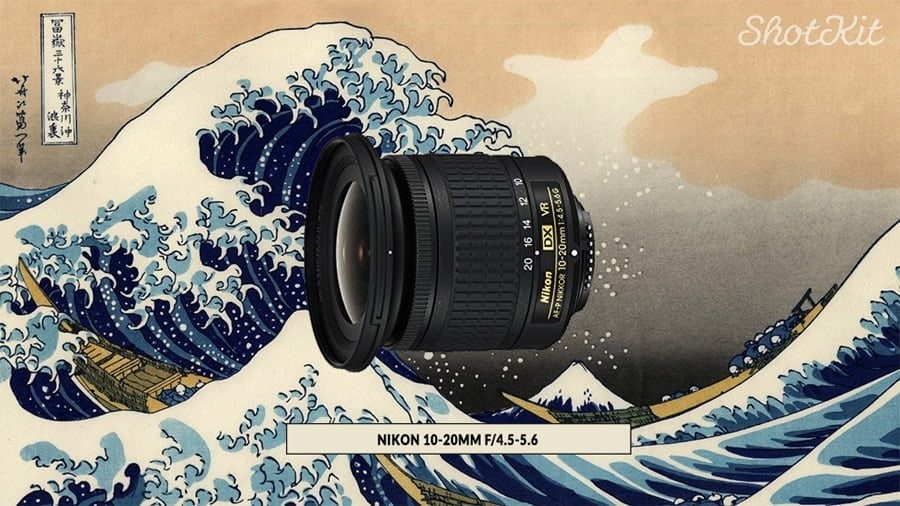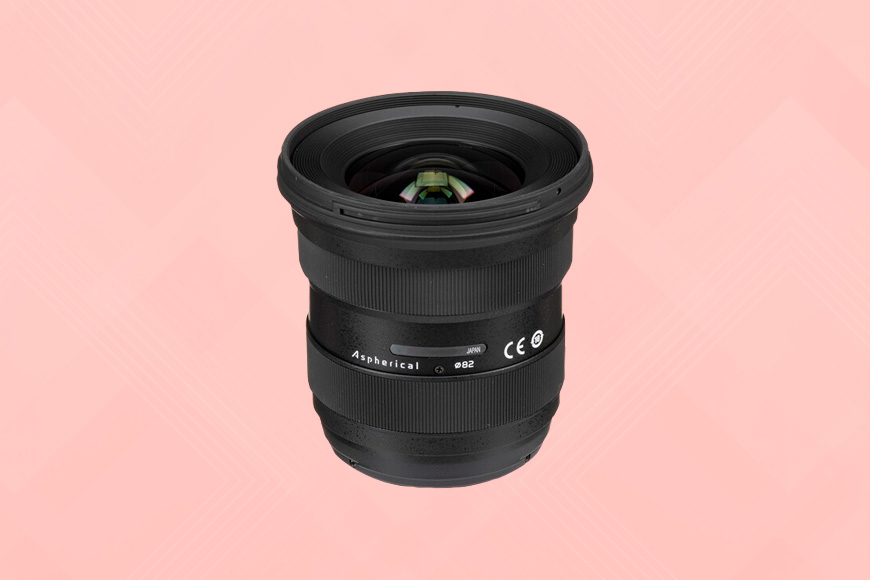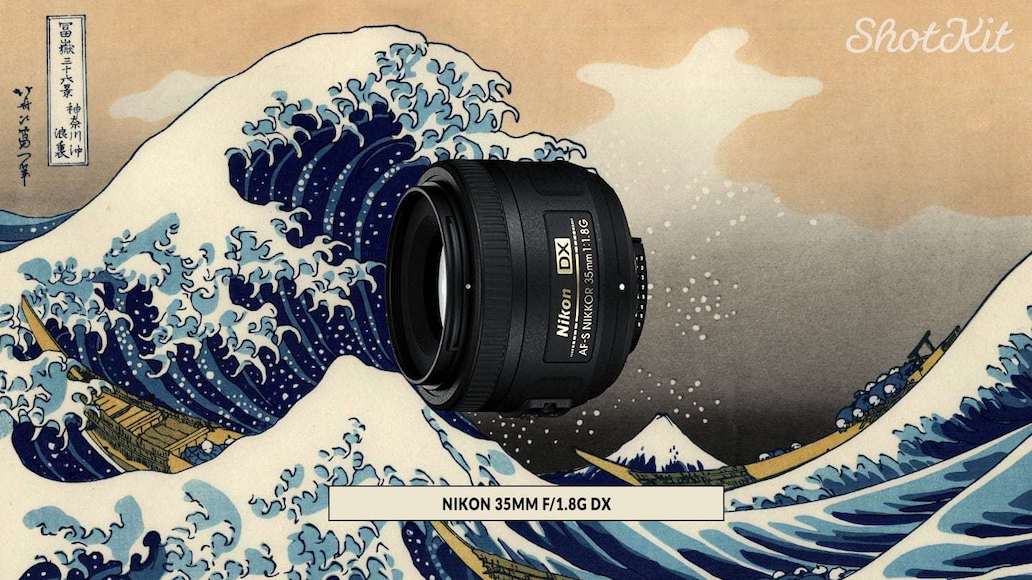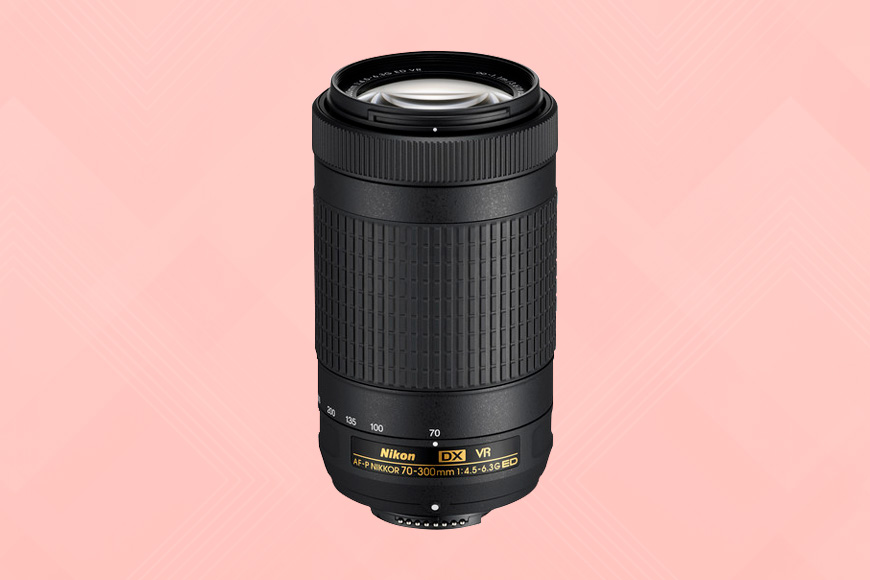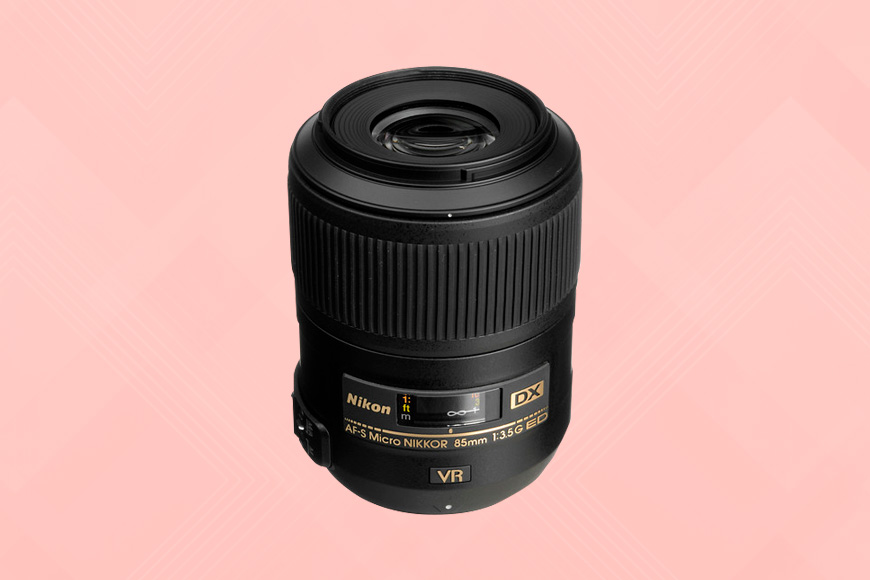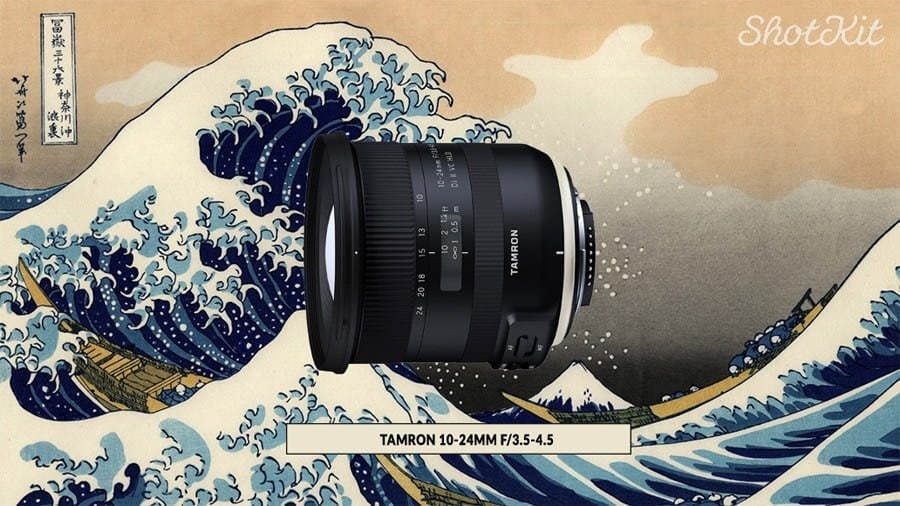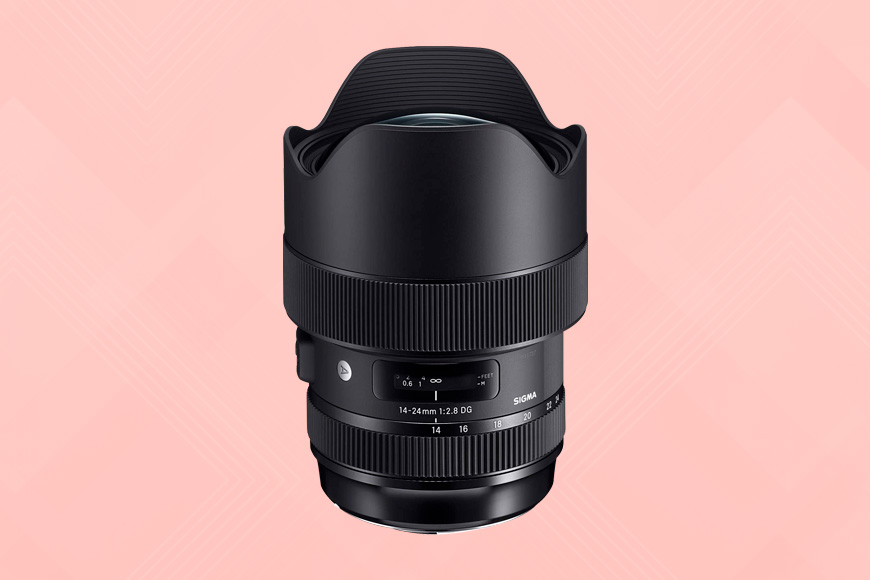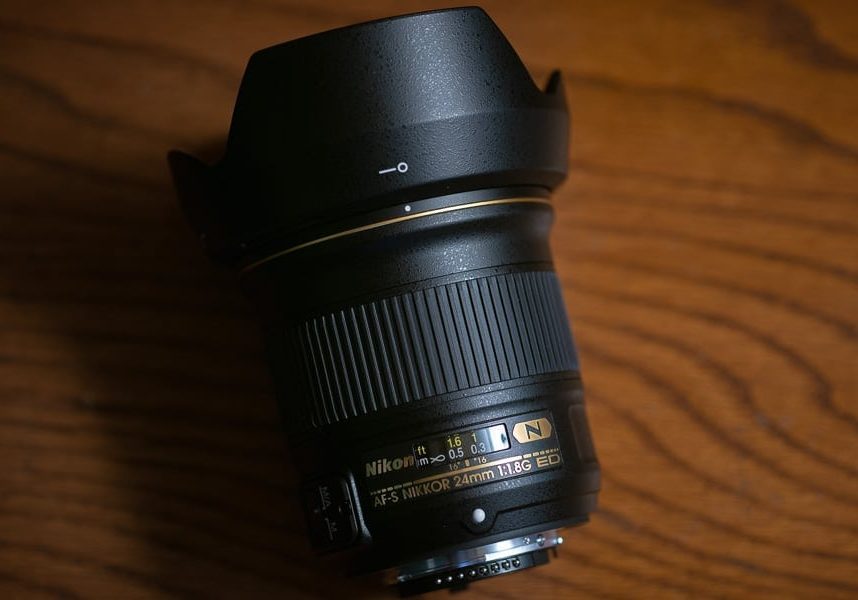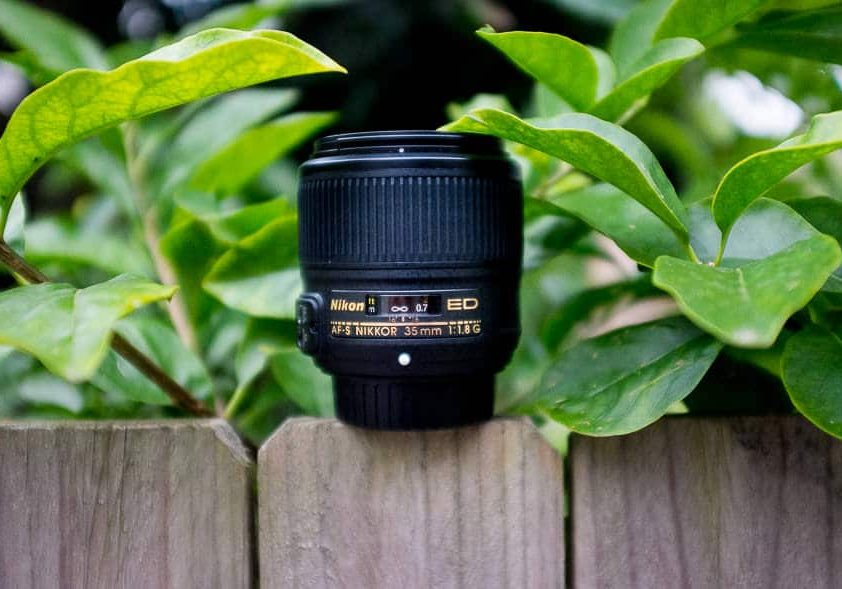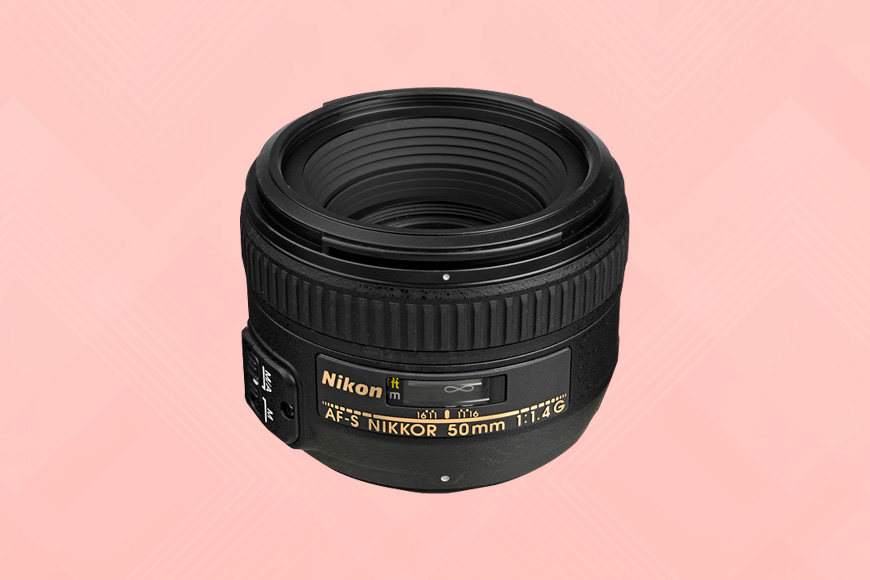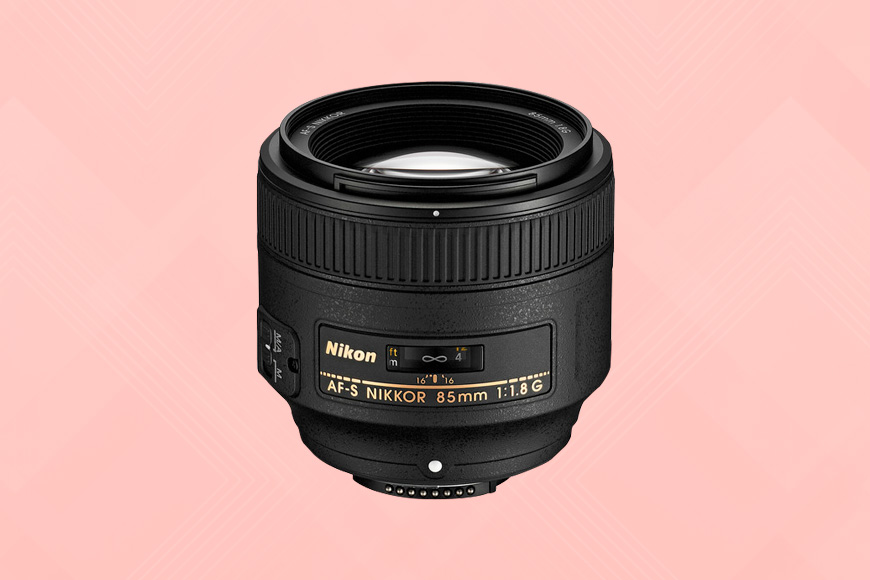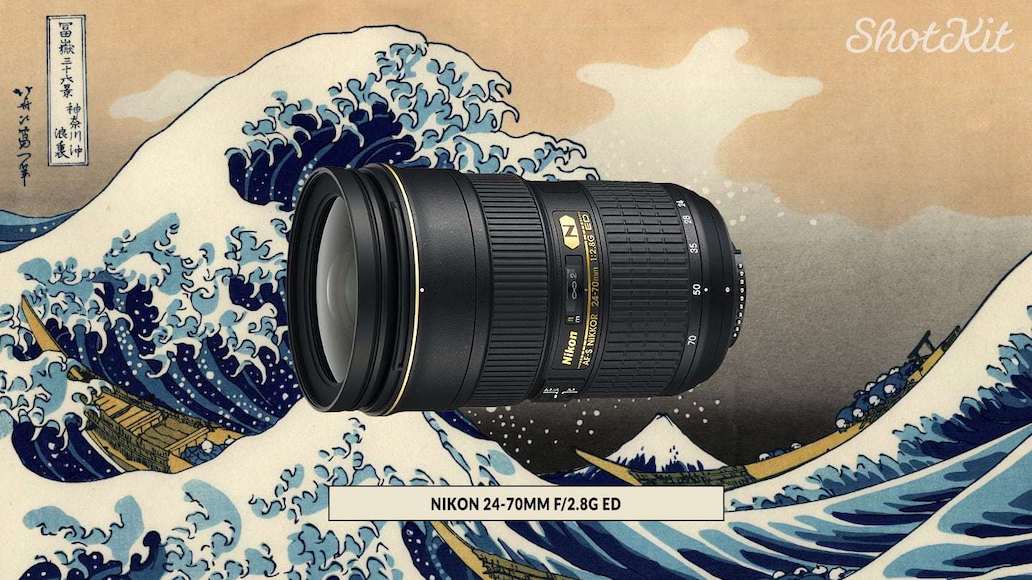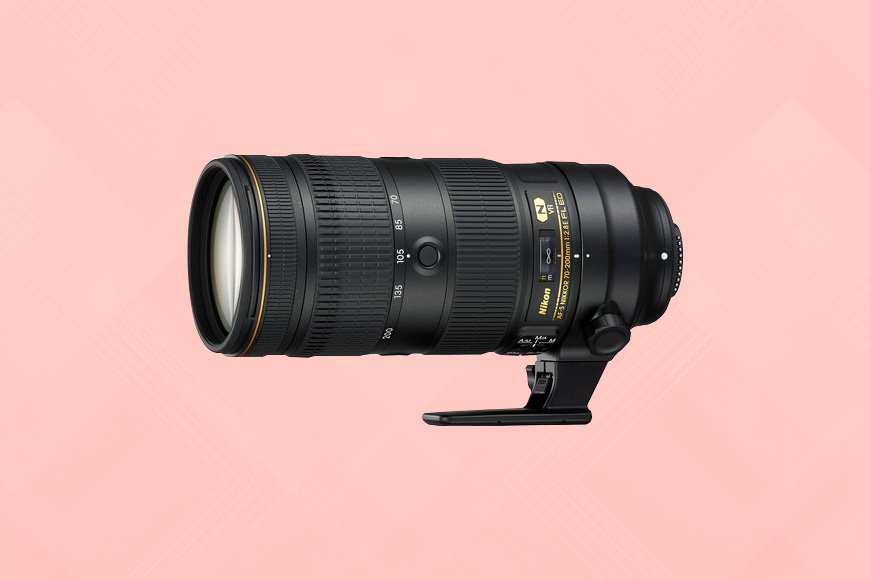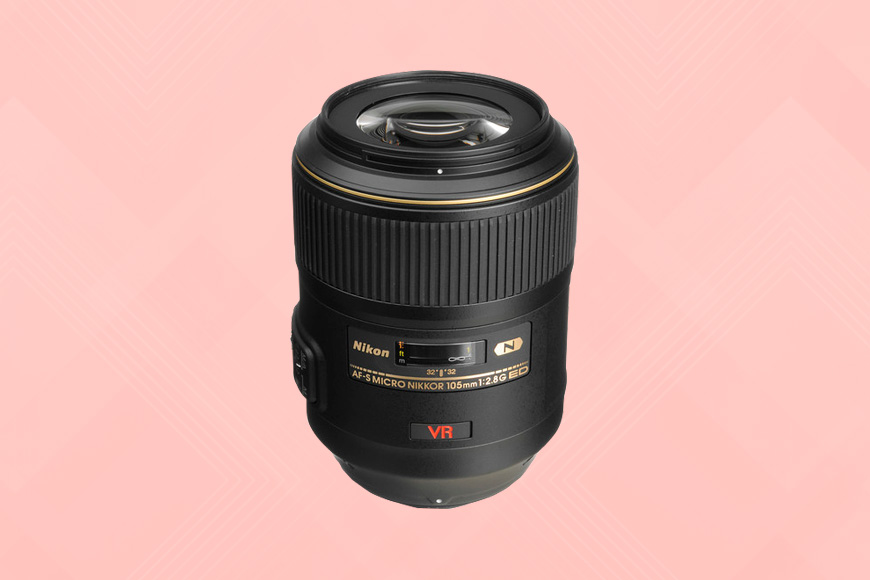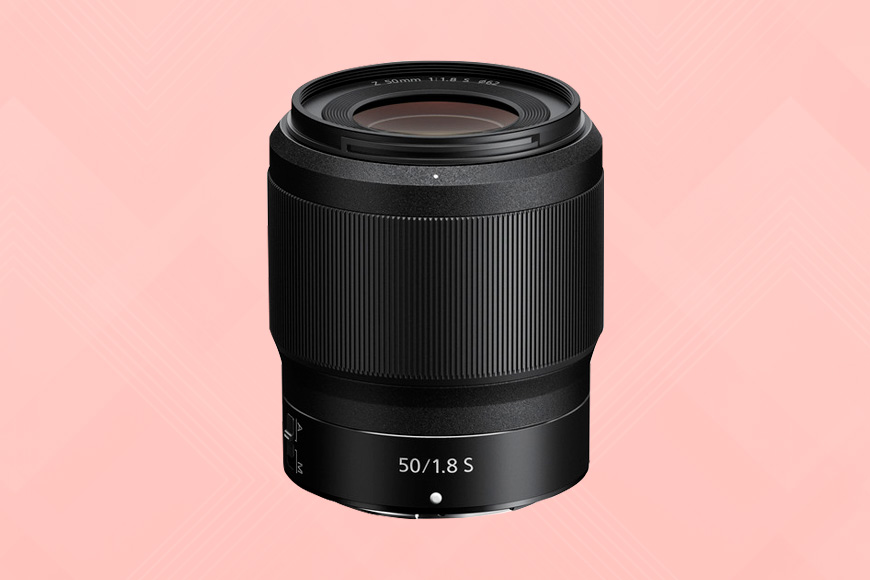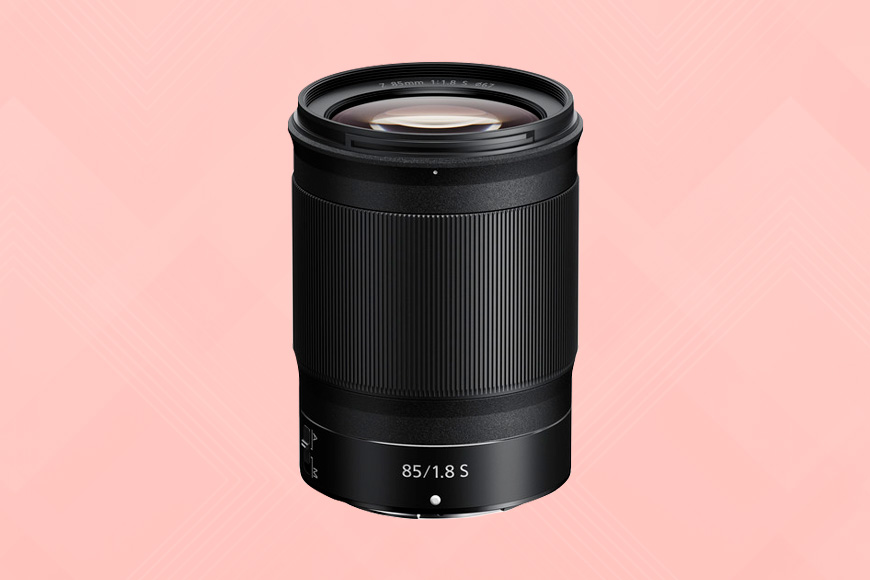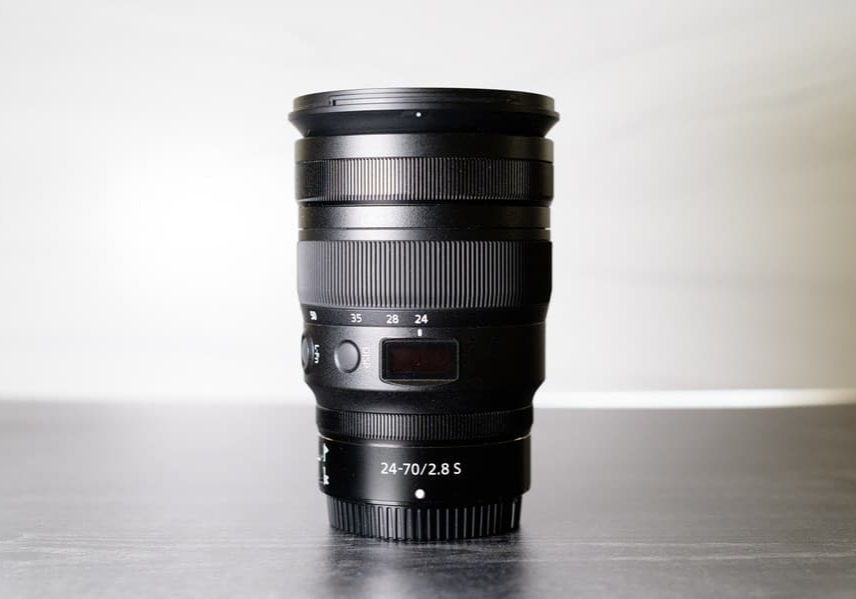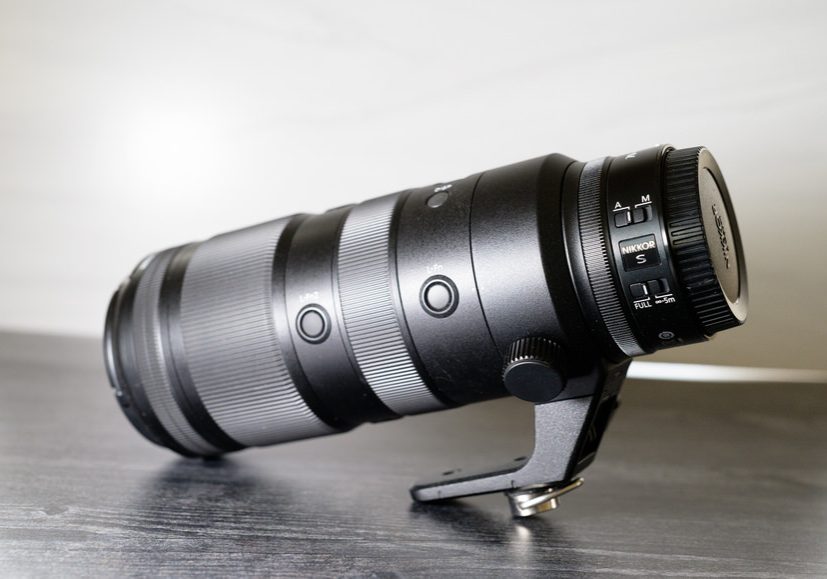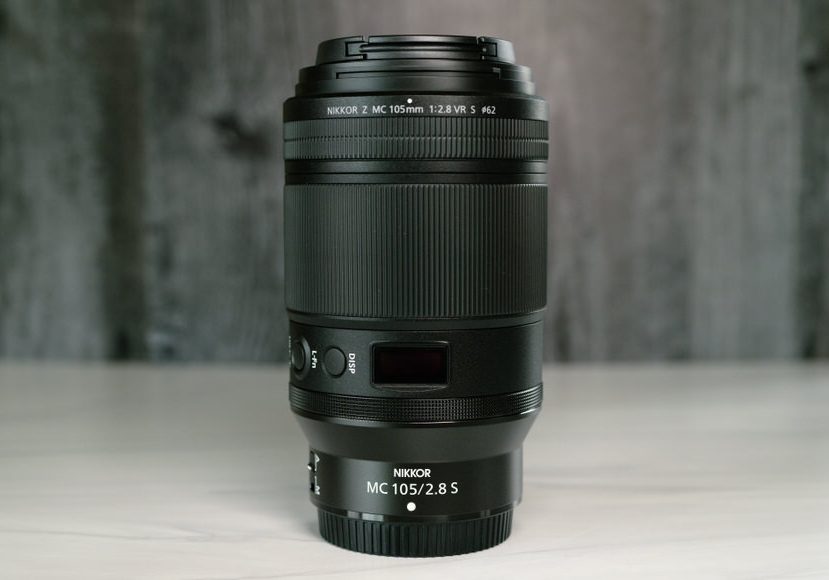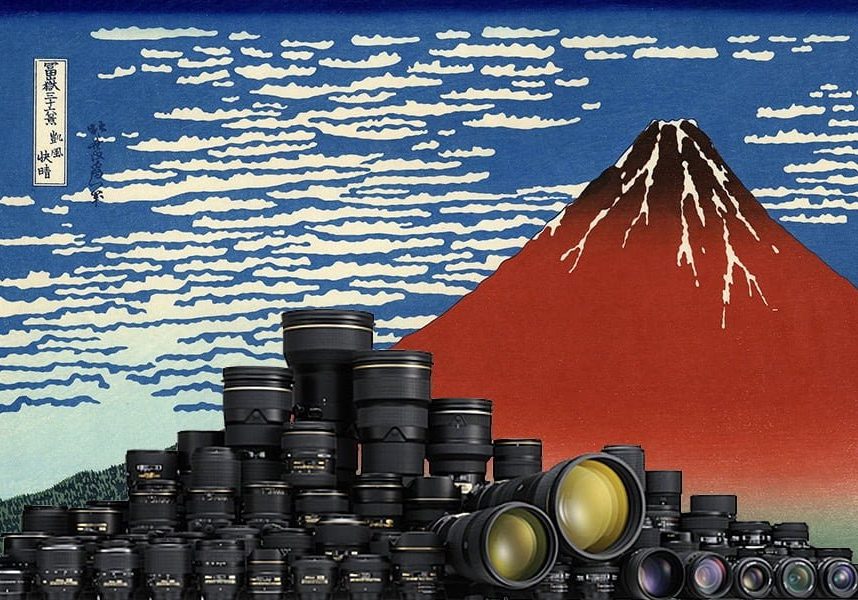
Best Nikon Lenses in 2024 (DSLR & Mirrorless) FX & DX
If you own a Nikon DSLR or mirrorless camera, read this guide to discover our top picks of DX and FX Nikon lenses you should be using this year.
These are what I consider to be the best Nikon lenses for most photographers based on my years of using Nikon DSLR and mirrorless cameras.
There are so many great Nikon lenses available here in 2024, that it can be rather overwhelming to know where to start.
One thing’s for sure, though – whether you’re a beginner or a pro, there’s a great piece of Nikon glass for you ;-)
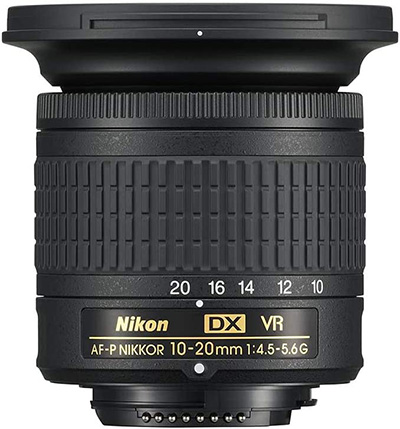
Ideal walkaround wide angle zoom lens for Nikon DSLRs at an unbeatable price.
In this Nikon F-Mount lens comparison, I’ve included both Nikon APS-C crop sensor (DX) and full frame (FX) options.
I’ve also updated it with lenses made by 3rd party manufacturers compatible with the Nikon mount.
…and for all you lucky Nikon Z-Series camera owners, you’ll find my Nikon mirrorless lens recommendations below too.
Think of this review as something you could give to any Nikon camera owner and say with confidence, “Pick a lens from this list and you’ll be happy!”
What Nikon Lenses Should You Buy First in 2024?
| Image | Product | Features | |
|---|---|---|---|
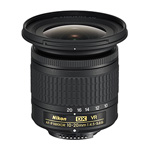 | Nikkor AF-P DX 10-20mm f/4.5-5.6 VROUR #1 CHOICE |
| Check AMAZON Price → Check B&H Price → |
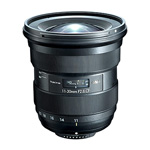 | Tokina atx-i 11-20mm f/2.8 CF PlusHIGHLY RECOMMENDED |
| Check AMAZON Price → Check B&H Price → |
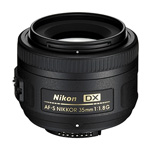 | Nikkor AF-S DX 35mm f/1.8GGREAT VALUE |
| Check AMAZON Price → Check B&H Price → |
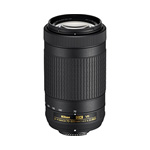 | Nikkor AF-P DX 70-300mm f/4.5-6.3G ED VR |
| Check AMAZON Price → Check B&H Price → |
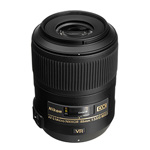 | Nikkor AF-S DX Micro 85mm f/3.5G ED VR |
| Check AMAZON Price → Check B&H Price → |
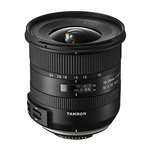 | Tamron 10-24mm f/3.5-4.5 Di II VC HLD |
| Check Amazon Price → |
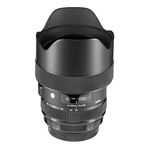 | Sigma Art 14-24mm f/2.8 DG HSM |
| Check AMAZON Price → Check B&H Price → |
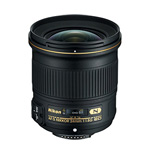 | Nikkor AF-S 24mm f/1.8G ED |
| Check AMAZON Price → Check B&H Price → |
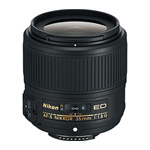 | Nikkor AF-S 35mm f/1.8G ED |
| Check AMAZON Price → Check B&H Price → |
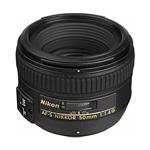 | Nikkor AF-S 50mm f/1.4G |
| Check AMAZON Price → Check B&H Price → |
What are the Best Nikon DX Lenses?
Nikon’s range of DX lenses is designed for cameras with a DX-format sensor, which is Nikon’s smaller sensor at 24x16mm found on their DSLR cameras such as the flagship D500 and the entry-level D3500.
1. Nikkor AF-P DX 10-20mm f/4.5-5.6 VR
Compatible Format: DX
Diaphragm Blades: 7
Minimum Focus Distance: 0.8 ft (0.22 m)
Filter Size: 72mm
Dimensions (Diameter x Length): 3.0 in. (77 mm) x 2.8 in. (73 mm)
Weight: 8.2 oz (230 g)
The Nikkor AF-P DX 10-20mm f/4.5-5.6 VR is an ultra-wide zoom lens that delivers stunning landscape and architecture photographs by exaggerating perspectives.
The minimum focus distance of just 0.22m allows for great close-ups, while the light weight makes it ideal for travel photographers who want crisp and vibrant shots on the go.
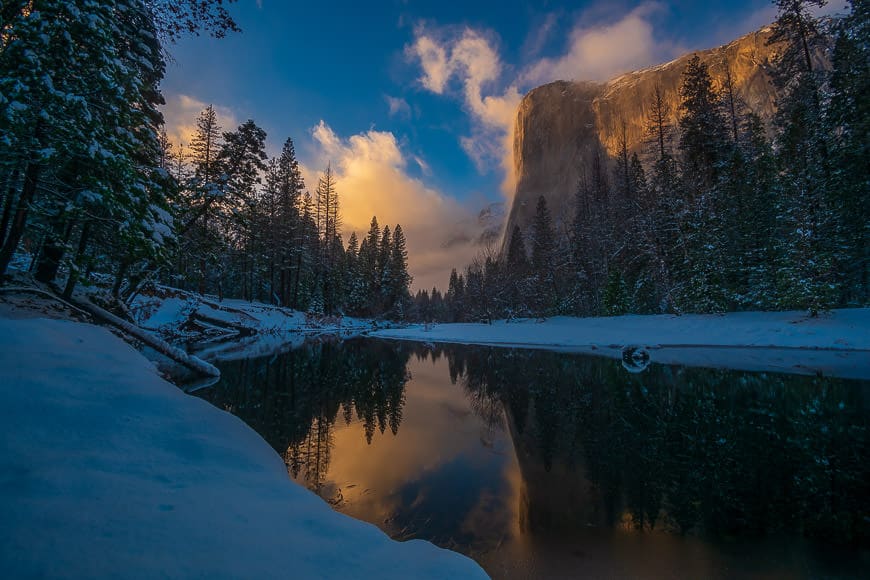
Nikon 10-20mm f/4.5-5.6 Sampe Image | Matthew Savill
It’s a fast and silent lens with superb autofocus for capturing photos or video footage with precision, with improved sharpness thanks to its Vibration Reduction (VR) system. Surely one of the superb Nikkor lenses to consider.
2. Tokina atx-i 11-20mm f/2.8 CF Plus
Compatible Format: DX
Diaphragm Blades: 9
Minimum Focus Distance: 0.011 in ( 0.28 m)
Filter Size: 82mm
Dimensions (Diameter x Length): 3.5 in (89 mm) x 3.62 in (92 mm)
Weight: 1.21 lbs (550 g)
Tokina’s third-party ultra-wide lens, the atx-i 11-20mm f/2.8 CF Plus, offers unparalleled performance for a lens in this category thanks to its superior optical performance.
With a maximum aperture of f/2.8, it’s capable of incredibly sharp astrophotographs, retaining exceptional sharpness throughout the zoom range.
It’s also one of the most robust ultra-wide lenses you can use with Nikon’s DX-format cameras, with plenty of grip on the textured zoom and focus rings.
3. Nikkor AF-S DX 35mm f/1.8G
Compatible Format: DX
Diaphragm Blades: 7
Minimum Focus Distance: 1.5 ft ( 0.45 m)
Filter Size: 52mm
Dimensions (Diameter x Length): 2.8 in. (70 mm) x 2.1 in. (52.5 mm)
Weight: 7 oz. (200 g)
Budget-conscious photographers looking for an all-purpose Nikon prime lens will get plenty of use out of the light and compact Nikkor AF-S DX 35mm f/1.8G.
While it lacks features found on more expensive models such as optical stabilisation, it’s a solid performer with quick and quiet autofocus and a bright aperture for vibrant images.

The Aspherical lens and Extra-low Dispersion glass elements in the Nikon 35mm f/1.8G virtually eliminate ghosting and flare, giving you exceptional contrast and definition even in strongly back-lit situations such as this.
Combined with its lightweight and compact design, it’s a great starter lens for a beginner photographer who needs something versatile and inexpensive.
4. Nikkor AF-P DX 70-300mm f/4.5-6.3G ED VR
Compatible Format: DX
Diaphragm Blades: 7
Minimum Focus Distance: 3.7 ft ( 1.1 m)
Filter Size: 58mm
Dimensions (Diameter x Length): 2.8 in (72 mm) x 4.9 in (125 mm)
Weight: 14.7 oz (415 g)
Another budget-friendly Nikon lens that is geared towards entry-level DSLR users is the Nikkor AF-P DX 70-300mm f/4.5-6.3G ED VR compact Nikon zoom lens.
Budding wildlife photographers can capture portraits at 70mm or get close in on the action at the 300mm focal length using the tactile oversized zoom ring.
The absence of a VR switch on the lens and plastic construction reflects its budget but doesn’t compromise on the overall pleasing image results it produces.
5. Nikkor AF-S DX Micro 85mm f/3.5G ED VR
Compatible Format: DX
Diaphragm Blades: 9
Minimum Focus Distance: 0.9 ft ( 0.286 m)
Filter Size: 52mm
Dimensions (Diameter x Length): 2.9 in (73 mm) x 3.9 in (98.5 mm)
Weight: 12.5 oz (355 g)
The Nikkor AF-S DX Micro 85mm f/3.5G ED VR offers great performance for close-up macro photography, with an impressive 14.5 minimum distance for focusing.
Vibration reduction and stabilisation open up the option to use the AF-S DX Micro 85mm for general photography when shooting with an APS-C format camera as a telephoto prime.
If macro photography is your thing, the Nikkor AF-S DX Micro 85mm f/3.5G ED VR is among the best in its price range for use with DX format Nikon cameras.
What are the Best Nikon FX Lenses? (For DSLR Cameras)
Nikon’s FX-format DSLR cameras offer a larger sensor than their DX counterparts, roughly equivalent to 35mm film cameras, and include models such as the Nikon Z9 and the Nikon D850.
1. Tamron 10-24mm f/3.5-4.5 Di II VC HLD
Compatible Format: FX
Diaphragm Blades: 7
Minimum Focus Distance: 9.4 in. (0.24 m)
Filter Size: 77 mm
Dimensions (Diameter x Length): 3.3 in (83.6 mm) x 3.2 in (82.1 mm)
Weight: 15.5 oz (440 g)
Initially released in 2017, the Tamron 10-24mm f/3.5-4.5 Di II VC HLD is a fun-to-use ultra-wide angle lens with an impressive list of specifications.
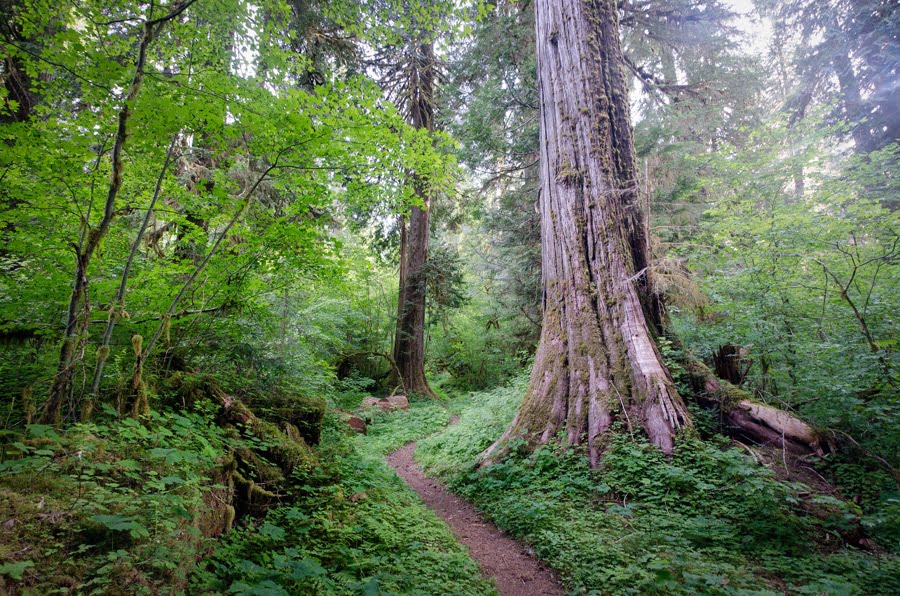
At 10mm this forest trail shot looks much more expansive than it would otherwise.
These include Vibration Control and Tamron’s bespoke HLD focusing system to achieve stable images that maintain great clarity.
With its combination of fluid ergonomic design and weather-sealed construction, it’s ideal for outdoor and landscape photography when shooting for long periods of time.
2. Sigma Art 14-24mm f/2.8 DG HSM
Compatible Format: FX
Diaphragm Blades: 9
Minimum Focus Distance: 10.24 in ( 0.26 m)
Filter Size: None
Dimensions (Diameter x Length): 3.8 in (96.4 mm) x 5.32 in (135.1 mm)
Weight: 2.53 lb (1150 g)
The Sigma Art 14-24mm f/2.8 DG HSM wide-angle zoom lens offers direct competition to Nikon’s similar lenses such as the Nikkor 14-24mm f/2.8 G.
Costing around half the price of the Nikon lens, this Sigma is a well-built lens that combines plastic elements with brass over a metal frame.
Excellent focus accuracy and strong performance across all focal lengths make this sharp lens a worthy contender in comparison to more expensive native lenses from Nikon.
3. Nikkor AF-S 24mm f/1.8G ED
Compatible Format: FX
Diaphragm Blades: 7
Minimum Focus Distance: 9.06 in ( 0.23 m)
Filter Size: 72mm
Dimensions (Diameter x Length): 3.05 in. (77.5 mm) x 3.27 in. (83 mm)
Weight: 12.52 oz. (355 g)
Another great lens designed for Nikon’s DSLRs is the Nikkor AF-S 24mm f/1.8G ED, delivering impressive sharp images with its wide aperture and swift autofocus.
It’s an older lens, initially released in 2015 when Nikon rolled out their line of full-frame prime lenses, appealing primarily to architecture and landscape photographers.
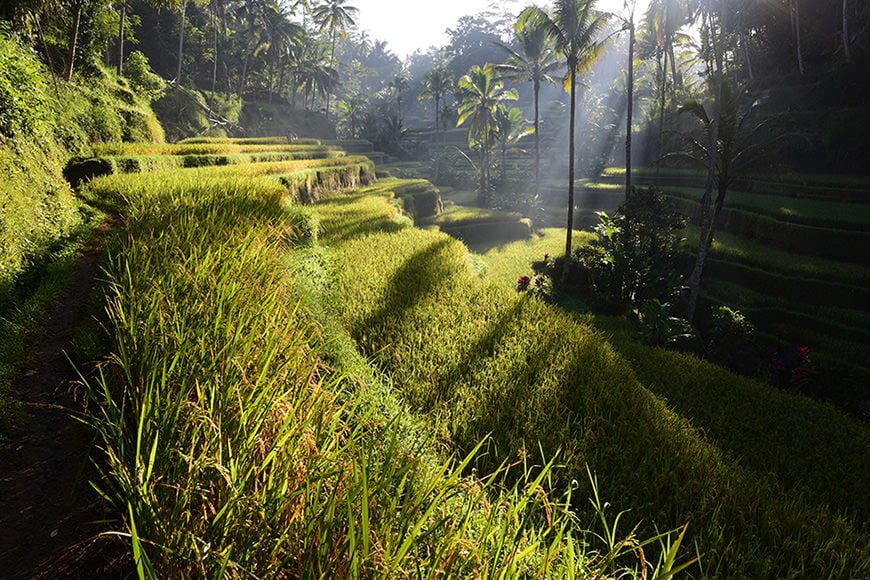
Nikon 24mm f/1.8G Sample Image | f/11 @ 1/50s | Alex Soh
While it’s possible to use the Nikkor AF-S 24mm f/1.8G ED on a DX body, optimal results will be found when used with full-frame Nikon DSLRs such as the D810A.
4. Nikkor AF-S 35mm f/1.8G ED
Compatible Format: FX
Diaphragm Blades: 7
Minimum Focus Distance: 9.84 in (25 cm)
Filter Size: 58mm
Dimensions (Diameter x Length): 2.83 in. (71.88 mm) x 71.37 in. (39 mm)
Weight: 10.76 oz. (305 g)
If you’d prefer a wide-angle lens with more versatility, the Nikkor AF-S 35mm f/1.8G ED hits that sweet spot equally at home shooting people as it is landscapes.
A popular lens among street photographers, it’s surprisingly robust for a budget lens, with rapid autofocus that holds up well even in low-light conditions.

Nikon D750 + Nikon 35mm f/1.8G ED | 1/1250 @f/1.8 ISO320
Its cross-compatibility between DX and FX camera systems makes it a great choice for DX-mount users considering upgrading to Nikon’s full-frame cameras.
5. Nikkor AF-S 50mm f/1.4G
Compatible Format: FX
Diaphragm Blades: 9
Minimum Focus Distance: 1.48 ft ( 45 cm)
Filter Size: 58mm
Dimensions (Diameter x Length): 2.89 in (73.5 mm) x 2.13 in (54.2 mm)
Weight: 9.88 oz (280 g)
There are many older lenses from Nikon that can be picked up for a bargain on eBay and other second-hand selling markets, such as the Nikkor AF-S 50mm f/1.4G.
Designed for portraits and general use such as street photography, this is a capable lens capable of producing sharp images with pleasant, creamy bokeh.
Nikon has certainly released many superior lenses since the AF-S 50mm f/1.4G was released, but this classic lens nevertheless represents great value for money.
6. Nikkor AF-S 85mm f/1.8G
Compatible Format: FX
Diaphragm Blades: 7
Minimum Focus Distance: 2.62 ft ( 80 cm)
Filter Size: 67mm
Dimensions (Diameter x Length): 3.15 in (80 mm) x 2.87 in (73 mm)
Weight: 12.35 oz (350 g)
The Nikkor AF-S 85mm f/1.8G set the bar for prime portrait lenses for FX-mount DSLR cameras when it was first launched in 2012 delivering silent performance and handling.
A popular consumer-level Nikon portrait lens, it’s capable of impressive image quality with minimal distortion and pleasing bokeh to enhance your portraits.

The bokeh from the Nikon 85mm f/1.8G is simply unbeatable at this price | f/2.8 @ 1/125
It’s another of Nikon’s attractive and affordable lenses for Nikon DSLR users who want a good value-for-money alternative to their pro-level prime lenses.
7. Nikkor AF-S 24-70mm f/2.8G ED
Compatible Format: FX
Diaphragm Blades: 9
Minimum Focus Distance: 1.25 ft (38 cm)
Filter Size: 77mm
Dimensions (Diameter x Length): 3.27 in (83 mm) x 5.24 in (133 mm)
Weight: 1.98 lb (900 g)
Working professionals and enthusiastic hobbyists alike were drawn to the Nikkor AF-S 24-70mm f/2.8G ED when looking for a workhorse standard zoom lens back in 2007.
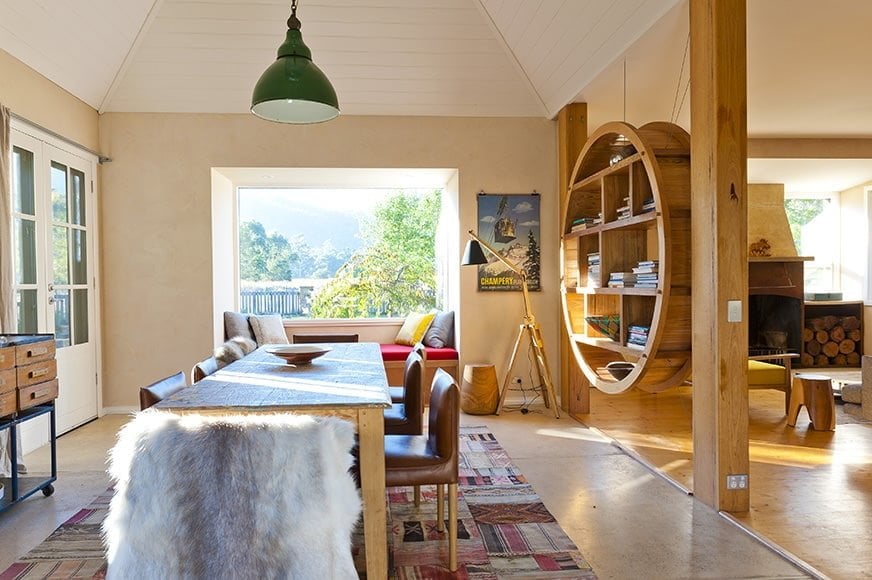
The Nikon 24-70mm is extremely versatile, equally at home shooting interiors as it is portraits.
Its focal length range makes it a great lens for photographers who need a fast, go-to lens for landscape or portrait work that is robust enough to handle extreme weather conditions.
The constant aperture of f/2.8 and all-around impressive optical performance makes the Nikkor AF-S 24-70mm f/2.8G ED a truly reliable lens for day-to-day photography.
8. Nikkor AF-S 70-200mm f/2.8E FL ED VR
Compatible Format: FX
Diaphragm Blades: 9
Minimum Focus Distance: 3.61 ft ( 1.1 m)
Filter Size: 77mm
Dimensions (Diameter x Length): 3.48 in (88.5 mm) x 7.97 in (202.5 mm)
Weight: 3.15 lb (1430 g)
If budget isn’t too much of a concern and you’re prepared to pay for high-end build quality, design, and optics, the Nikkor AF-S 70-200mm f/2.8E FL ED VR delivers the goods.
It’s quite simply a stunning zoom lens for FX-mount DSLRs that brings on board a raft of new features including fluorite glass construction and an electromagnetically controlled aperture.
Everything from the tactile manual focus ring to the uprated optical stabilization makes shooting with this premium zoom lens a truly pleasurable experience.
9. Nikkor AF-S Micro 105mm f/2.8G VR IF-ED
Compatible Format: FX
Diaphragm Blades: 9
Minimum Focus Distance: 1.03 ft ( 31.4 cm)
Filter Size: 62mm
Dimensions (Diameter x Length): 3.27 in (83 mm) x 4.57 in (116 mm)
Weight: 1.58 lb (720 g)
Macro photographers shooting with full-frame Nikon DSLR cameras can capture the smallest of detail by using the Nikkor AF-S Micro 105mm f/2.8G VR IF-ED lens.
With a working distance of around 15cm, it’s a sharp and detailed lens designed first and foremost for extreme close-up photography with full 1.0x macro shooting.
While the Nikkor AF-S Micro 105mm f/2.8G VR IF-ED is limited in applications compared to other lower-budget lenses, macro enthusiasts have thrown their support behind this model.
What are the Best Nikon FX Mirrorless Lenses?
Nikon’s premium mirrorless cameras utilize the ultra-wide Z series mount for incredible optical performance, ranging from the content creator-friendly Z30 to the flagship Z9.
1. Nikkor Z 50mm f/1.8 S
Compatible Format: FX
Diaphragm Blades: 9
Minimum Focus Distance: 1.31 ft ( 40 cm)
Filter Size: 62mm
Dimensions (Diameter x Length): 2.99 in (76 mm) x 3.41 in (86.5 mm)
Weight: 14.64 oz (415 g)
The Nikkor Z 50mm f/1.8 S sits on the affordable end of the spectrum of Nikon’s mirrorless camera lenses, offering professional-quality images in a compact package.
It might be their least expensive Z lens, but this doesn’t mean it compromises on handles exceptionally well and produces fantastic image quality due to its great optics.
Retaining sharpness even at its maximum aperture of f/1,8, the Nikkor Z 50mm f/1.8 S is among the best portrait photography lenses in its class.
2. Nikkor Z 85mm f/1.8 S
Compatible Format: FX
Diaphragm Blades: 9
Minimum Focus Distance: 2.62 ft ( 80 cm)
Filter Size: 67mm
Dimensions (Diameter x Length): 2.95 in (75 mm) x 3.9 in (99 mm)
Weight: 1.03 lb (470 g)
Another solid lens for portrait photography from the Z stable is the Nikkor Z 85mm f/1.8 S, boasting extremely quiet autofocus and tactile performance on Nikon Z cameras.
Its large aperture makes it a great lens for low-light photography as well as offering clean subject isolation for impressively smooth bokeh when shooting portraits.
Nikon raised the bar with the release of the Nikkor Z 85mm f/1.8 Sm merging top-tier build quality with a new internal focusing design for impressive sharpness and fidelity.
3. Nikkor Z 24-70mm f/2.8 S
Compatible Format: FX
Diaphragm Blades: 9
Minimum Focus Distance: 1.25 ft ( 38 cm)
Filter Size: 82mm
Dimensions (Diameter x Length): 3.5 in (89 mm) x 4.96 in (126 mm)
Weight: 28.4 oz (805 g)
Z-mount mirrorless camera photographers looking for a combination of versatile focal lengths with a sharp, wide aperture will find plenty to love about the Nikkor Z 24-70mm f/2.8 S.
This great lens isn’t cheap, but boasts impressive specifications and some unique additions such as the OLED information display for a standard of performance few lenses can rival.
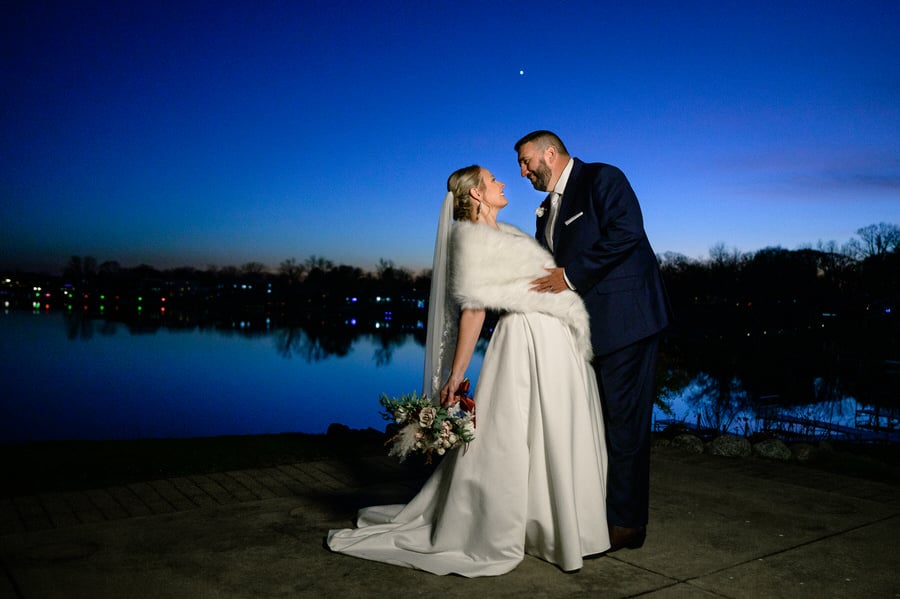
Nikon Z6 II + Nikon 24-70mm f/2.8 | 1/125 / f/2.8 ISO 3200 | Steve Vansak
Capable of serving as a competent macro lens in addition to landscapes and portraits, the Nikkor Z 24-70mm f/2.8 S delivers a high-end alternative to more the consumer-friendly 24-70mm f4 S.
4. Nikkor Z 70-200mm f/2.8 VR S
Compatible Format: FX
Diaphragm Blades: 9
Minimum Focus Distance: 1.64 ft ( 50 cm)
Filter Size: 77mm
Dimensions (Diameter x Length): 3.5 in (89 mm) x 8.66 in (220 mm)
Weight: 2.99 lb (1360 g)
Nikon’s Nikkor Z 70-200mm f/2.8 VR S is their professional-grade telephoto zoom lens designed for their mirrorless cameras incorporating their high-grade optical system.
Strong optical stabilization and a customizable control ring make this a fine lens for sharp and accurate sports and wildlife photography that’s equally at home shooting portraits.
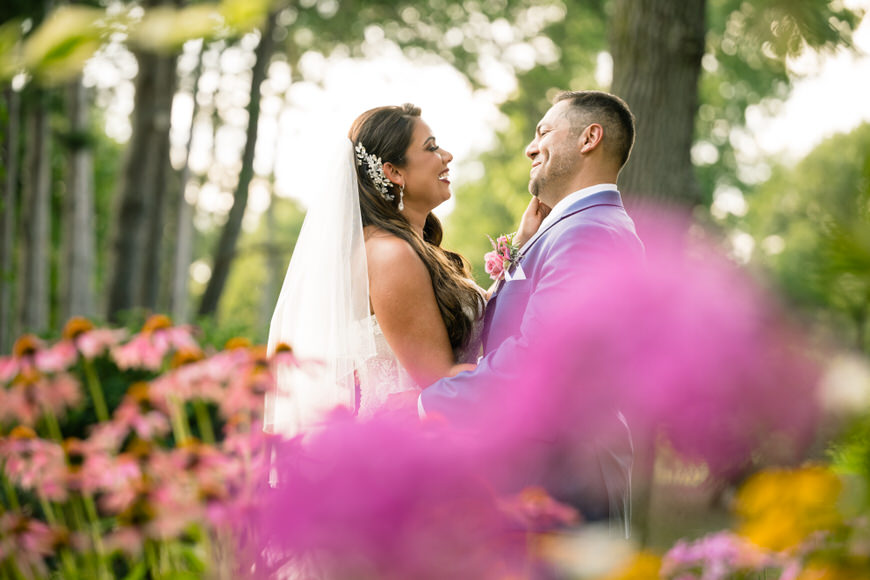
Nikon Z 70-200mm f/2.8 Sample Image | Steve Vansak
Dedicated professionals and amateurs with a flexible budget all agree that the Nikkor Z 70-200mm f/2.8 VR S is among the best zoom lenses for Nikon’s mirrorless cameras.
5. Nikkor Z MC 105mm f/2.8 VR S
Compatible Format: FX
Diaphragm Blades: 9
Minimum Focus Distance: 11.4″ ( 29 cm)
Filter Size: 62 mm
Dimensions (Diameter x Length): 3.3 in (85 mm) x 5.5 in (140 mm)
Weight: 1.4 lb (630 g)
Nikon Z-series camera owners looking for a sharp and accurate macro lens that doubles up as a great telephoto prime should consider the Nikkor Z MC 105mm f/2.8 VR S.
A serious performer for macro images, this lens was the first released by Nikon dedicated to their Z mirrorless system and still among the best in the price range.
It’s a feature-rich macro lens with impressive optical quality and intuitive handling that comes with plenty of customisation functions for more seasoned photographers to explore.
How Do I Choose a Lens for a Nikon F-Mount or Z-Mount Camera?
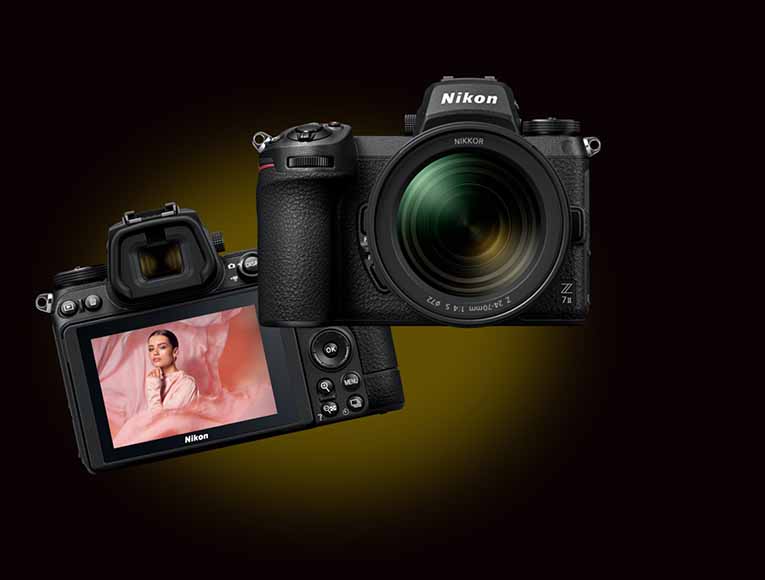
There are a wide range of F and Z-mount cameras available from Nikon
Nikon first introduced the F-mount system for their cameras over 60 years ago, so there are hundreds of available lenses that are compatible with this format.
In contrast, the Z-mount is a relatively new system that was introduced in conjunction with their full-frame mirrorless cameras in 2018 for their FX sensor format.
Before you opt for a particular lens, you should check the model of your Nikon camera to verify which mount it features so you know whether to look for F-mount or Z-mount lenses.
Once you’ve done this, you can decide which lens to go for based on your photography style and preferences, for example, choosing a wide-angle lens for landscapes or a telephoto lens for wildlife and sports photography.
It’s also worth bearing in mind that F-mount lenses are fully compatible with Z series cameras when using the Mount Adapter FTZ and FTZ II, opening up your options for building a lens collection.
Nikon is slowly discontinuing its range of F-mount lenses to focus on producing lenses for their range of mirrorless cameras, so you may need to head to second-hand sellers to pick these up.
What are the Best Cheap Nikon Lenses?
You don’t have to splurge on a brand new lens to take impressive photographs with a Nikon camera, with plenty of excellent and affordable lenses on the second-hand market.
Here are a few examples of fantastic lenses you can pick up without breaking the bank:
This lens offers excellent shallow depth of field with impressive low-light performance and can be picked up second-hand for under $150.
- Sigma 70-300mm f/4-5
An excellent budget lens for wildlife photography enthusiasts, this third-party lens can be snagged for under $100 and proves you don’t have to stick with native lenses for great performance.
- Yongnuo YN85mm f/1.8Z DF DSM
If you’re looking for one of the best budget lenses for Z-mount mirrorless cameras, this prime lens from Yongnuo delivers excellent autofocus and customization for under $400.
Recommended Nikon Lenses for Specific Usage

Now it’s time to introduce you to the Nikon lenses that I wanted to include in this roundup, but felt they were a little too specific to be considered good all-rounders.
I’ll make this section short and sweet – just click through the links if you’d like to read real user reviews of the different lenses.
Amazon’s a great place to make a buying decision since its reviews are by those who’ve actually bought and used the lens. You’ll notice that all the lenses I recommend here have numerous 5 star reviews.
What’s a good macro lens for Nikon?
The Nikon 85mm f/3.5G ED VR AF-S DX Micro is a lens with a huge name for shooting small things ;-) It also happens to be the number one macro lens for Nikon DX format DSLRs.
Sharp with built in image stabilization, the Nikon 85mm f/3.5G Micro is good value for money and gets the job done.
For those who’ve ever tried macro photography before, you’ll know you either need a lot of light and/or a tripod. To be able to get the entire object in focus, you’ll usually need to use smaller apertures, meaning slower shutter speeds or higher ISOs (unless you can add more light).
Having the vibration reduction built into the Nikon 85mm f/3.5G Micro is a great help in this regard.
If you own a Nikon FX camera, the best Nikon macro lens is the Nikon 105mm f/2.8G VR. It’s built like a tank, has an f/2.8 aperture for low light and in-built vibration reduction.
Which Nikon lens is best for architecture photography?
Architecture photography requires lines to be straight and not converging (buildings with 90 degree sides). This usually requires specialty lenses known as tilt-shift lenses.
The top Nikon lens for architecture photography is widely regarded as the Nikon 24mm f/3.5 PC-E. It’s a wide angle lens with very little distortion and incredible sharpness.
If you’re not bothered about keeping lines straight, and instead perhaps want to exaggerate the size of your rooms (AirBnb, anyone?!), just choose from one of these wide angle lenses.
Which Nikon lens produces the nicest bokeh?
This is a bit of an arbitrary choice since so many of the Nikon lenses can produce pleasing bokeh, but there’s one lens that is widely viewed to be the king of bokeh in the Nikon line up.
The Nikon 58mm f/1.4G is a love/hate lens, but one that produces the creamiest, most incredible bokeh out of all the Nikon lenses. It has the unusual ability to create three-dimensionality to an image, by knocking the background so much out of focus that the foreground element seems to leap away towards you.
Amongst all the Nikon full frame lenses, 58mm is one of the more unusual focal lengths. This lens is light weight, and fast to focus, but not especially sharp wide open and over-priced. However, if you simply must have a lens that produces an image like no other, the Nikon 58mm f/1.4G should be in your camera bag.
If you’re interested to learn more about this bokeh-monster of a lens, check out the Nikon 58mm f/1.4 review.
Medium-Long Range Zoom Lens
The new Nikon 70-200mm f/2.8E FL is what many claim to be the world’s number one 70-200mm lens. It’s the sharpest, very well made, lightest and closest focusing f/2.8 70-200 lens ever made.
You’ll be blown away at how fast this incredible lens can focus, and how accurate it is, even in low light. The FL is a fluorite element that delivers even better optical performance than its predecessors.
Being able to focus at only 3.6 ft. ( 1.1 m) is an impressive feat for a 70-200, making this one very versatile zoom lens.
The Nikon 70-200mm f/2.8E FL can also be used on DX cameras giving you even more reach (105-300) and combined with a camera such as the Nikon D500, which would make a great pro sports photography combo.
If you can afford the Nikon 70-200mm f/2.8E FL, you simply can’t get anything better in this zoom range.
What are the best Nikon lenses for portraits?
One of the most popular Nikon lenses for portrait photography is the Nikon AF-S 85mm f/1.4G, as it combines the ideal focal length for portraits without any noticeable distortion of the subject.
The focal length also allows the photographer to sit away from the subject at a comfortable distance without sacrificing close-up shots with exceptional detail.
If you’re looking for another powerful prime lens you can use for portraits, the Nikon AF-S FX 50mm f/1.8 Prime Lens is an affordable option that is also extremely lightweight.
Nikon photographers who are invested in their mirrorless Z series cameras typically consider the Nikon Z 85mm f/1.8 S to be the optimal lens for high-quality portrait photography.
What are the best Nikon lenses for landscape photography?
There are a variety of exceptional lenses suitable for shooting landscapes, with the Nikon AF-S NIKKOR 16-35mm f/4G ED VR Lens delivering crisp and detailed results with the vibration reduction image stabilization feature.
The Nikon 14-24mm f/2.8G also delivers beautifully sharp images, although if you rely on filters for your landscape photographs, you’ll need to invest in a filter holder system to use them here.
Photographers who are invested in Nikon’s Z mount full frame cameras will be well-served with the Nikon Z 17-28mm f/2.8 Lens, which offers a bright aperture and full weather sealing for shooting in adverse conditions.
Which Nikon lens is best for wildlife photography?
Wildlife photographers require long focal lengths to allow them to punch in on the action from a distance, with the pricey Nikon 800mm f/5.6E FL ED VR offering exceptional range for most situations.
An alternative lens in the Z mount category is the Nikon Z 400mm f/4.5 VR S, while the Nikon Z 100-400mm f/4.5-5.6 VR S delivers great images with more scope in the focal length.
For photographers on a tighter budget who are using one of Nikon’s DSLR cameras, the Nikon 70-300mm f/4.5-5.6E VR AF-P is a light, fast, and sharp telephoto lens that packs a punch without breaking the bank.
What do the letters on a Nikon Lens mean?
Before you dive headfirst into the Nikon lens reviews, it’s important to understand what all the letters in the lens name mean.
Here’s an example of a lens that’s quite a mouthful:

Nikon lens naming conventions can be a little confusing…
The above lens is the Nikon 70-200mm f/2.8G ED VR II AF-S. Let’s break down all these confusing abbreviations:
- 70-200mm – the focal range
- f/2.8 – the maximum aperture
- ED – Extra-low Dispersion of the light as it enters the lens, leading to better image quality
- VR – Vibration Reduction, to allow the use of slower shutter speeds while shooting handheld
- II – a second generation lens
- AF-S – Auto-Focus with built-in Silent Wave Motor – these lenses even work on cameras without built-in motors.
Other common Nikon lens abbreviations you may see are:
- FL – Fluorite Lens elements, also improving image quality
- G – does not include an aperture ring. Most modern lenses are ‘G’ lenses
- IF – Internal Focusing, which allows the lens to focus quicker
- N – Nanon Crystal Coating, usually displayed n the side of a lens as a gold badge
- FX – lens designed for a full frame (35mm equivalent) camera sensor
- DX – lens designed for a crop sensor (APS-C) camera sensor
In these Nikon lens reviews, I’ve removed the superfluous lettering after the main elements of each lens name in the interests of simplicity.
What is the Nikon Z Lens Roadmap for 2024?
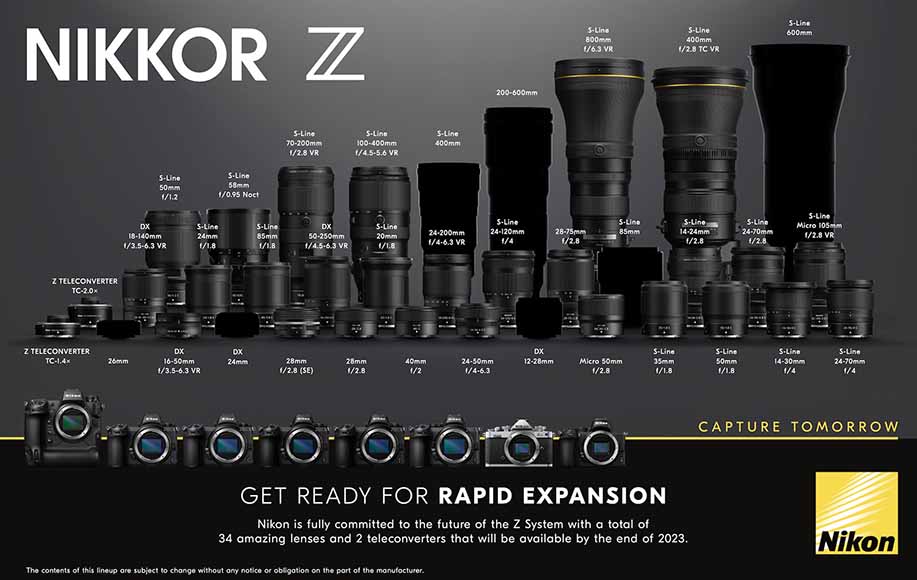
Nikon’s Z Lens Roadmap for 2024 includes many excellent new models
Nikon’s updated Z lens roadmap features an impressive selection of lenses due for release covering the complete range of focal lengths, from wide-angle lenses to super-telephoto 800mm lenses.
While the official specifications for these lenses aren’t included in the roadmap, details on their focal length and aperture are included along with the inclusion of vibration reduction and other features.
There are a total of 32 lenses listed in the roadmap, and while this is lower than in previous years, it still represents a comprehensive selection suitable for all styles of photography.
It’s also possible that the current list isn’t exhaustive and that Nikon will make a surprise announcement regarding the release of as-yet-undisclosed lenses they have in store for their customers.
What are other common questions about Nikon camera lenses?
What is the Nikon 70-300mm lens used for?
The Nikon 70-300mm lens is a versatile lens that is suitable for different shooting styles including sports and wildlife photography. Its light weight also makes it a good lens choice for travel photographers.
What is the sharpest aperture for Nikon 18-55mm lens?
To use the Nikon 18-55mm lens offers great sharpness when wide open, with improved sharpness when setting the aperture between f/8 and f/11, with consistent sharpness across all focal lengths.
What is Nikon 50mm lens good for?
The Nikon 50mm lens is a surprisingly versatile lens suitable for landscape and street photography as well as for producing pleasing portraits. It’s a flexible focal length used by photographers as a solid all-rounder. The 50mm is one of the best Nikon DSLR lenses to consider adding to your arsenal.
What is a Nikon 18-55mm lens good for?
Another great lens noted for its versatility, the Nikon 18-55mm lens is perfect for landscapes and architecture at 18mm, while at 55mm it’s a great choice for portraits.
Set it to the mid-range focal length of around 35mm if you want to shoot travel and street photography.
Does Nikon make a macro lens?
There are many fantastic lenses manufactured by Nikon that can be used for macro photography, including the Nikon 105mm f/2.8G AF-S VR Macro and the Nikon AF-S DX 40mm f/2.8 Prime Lens.
What is the Nikon 18-140mm lens used for?
With its exceptional focal range, the Nikon 18-140mm is a solid choice for photographers looking for a one-stop lens covering everything from landscapes to portraits and even close-ups of sporting action.
What is the Nikon 55-300mm lens used for?
Another lens with many shooting possibilities, the Nikon 55-300mm telephoto lens is ideal for sports and wildlife photographers who want to get close to action from a distance while retaining the option for portrait-style photographs.
What is the longest zoom lens for Nikon?
Nikon offers a range of impressive super-telephoto lenses for their cameras, with the AF-S NIKKOR 800mm f/5.6E FL ED VR delivering an incredible reach combined with a fast maximum aperture for excellent bokeh.
How do I update the firmware on my Nikon lens?
Firmware updates for Nikon lenses can be performed through the camera’s menu system, provided the lens is currently attached.
Simply head to the Firmware version option in the menu settings and choose the most up-to-date firmware number to begin the update for your lens.
Can I use an AF-P lens with my Nikon camera?
Compatibility with AF-P lenses on Nikon cameras can vary between models, so you should check on the Nikon website to see if yours is designed for use with such lenses before you invest in one.
Which is the sharpest lens for Nikon?
There are several great lenses for Nikon that offer high levels of sharpness, but you should decide which focal length you wish to shoot at before choosing a lens.
Their 50mm f1.4 offers exceptional sharpness for a versatile focal length, while the Nikon AF-S Nikkor 200mm f/2G ED VR II is a solid – if expensive – telephoto lens that offers the sharpest image in that focal length.
Can Nikon lens be repaired?
Like all lenses, it’s possible to get your Nikon lens repaired should you accidentally damage it, although the cost of repairs will depend on the severity of the damage.
You can get a lens repaired on the warranty if this is still valid or pay to have either Nikon’s technical team or a third-party company repair it at cost.
What is the Nikon 85mm lens used for?
The Nikon 85mm lens is a great focal length lens for portrait work, capable of photographing the subject in sharp relief with a pleasingly blurred-out background when set to a wider aperture.
What is the biggest lens for Nikon?
The biggest lens you can currently buy from Nikon for their cameras is the AF-S NIKKOR 800mm f/5.6E FL ED VR, which weighs in at a hefty 10.1 lb / 4590 g.
What is the best walk around lens for Nikon?
There are several Nikon lenses that are ideal for travel and street photography which take up minimal space with a low weight you can choose from.
The Nikon 24-120mm f/4G ED FX is a popular choice, as is the Nikon 50mm f/1.8 if you’d prefer to use a sharp prime lens instead of a zoom lens.
When should you not use VR on Nikon lens?
Typically, when using a Nikon lens that features VR (vibration reduction) you should turn this feature off when using it while mounted on a tripod, since there will be no motion for the VR system to detect.
What is the most versatile lens for Nikon?
The Nikon AF-S 24-70mm f/2.8E ED VR lens is a great first lens if you’re looking for a versatile option for a range of shooting styles, giving you options ranging from landscapes to portrait work.
What is the best prime lens for Nikon?
As a general rule of thumb, prime lenses will deliver superior image quality compared to zoom lenses, with the Nikon AF Nikkor 50mm f/1.8D a good lens worth considering.
The Nikon 35mm f1.4G AF-S is another great, albeit more expensive, prime lens for photographers with a bigger budget at their disposal.
Can I use FX lens on DX body?
In the Nikon system, any FX lens can be used on a DX camera. On the contrary, DX lenses aren’t compatible with FX camera bodies. So do be sure to check which one is right for you before you buy.

Ideal walkaround wide angle zoom lens for Nikon DSLRs at an unbeatable price.





